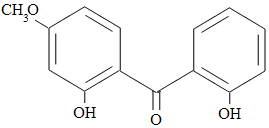SoyScreen is the name for a new, all-natural, skin- and hair-care product developed in the laboratory of Joe Laszlo and Dave Compton. Both are chemists not from the cosmetics industry, but rather from ARS' National Center for Agricultural Utilization Research in Peoria, Illinois.
This lab may seem an odd place for research on a product destined for the skins of millions of beachgoers. Peoria is, after all; a midwestern city with strong roots in corn and soybean farming. But it actually makes sense if you're familiar with soybean oil's versatile nature--was Laszlo and Compton are.
They also know a thing or two about ferulic acid, a natural antioxidant that's abundant in rice and oat bran. Their knowledge of such things is all part of the job: developing new, value-added products from agricultural commodities, especially soy oil. By one estimate, the U.S. soy industry generates 800 million pounds of surplus oil each year. With SoyScreen, the researchers hope to cast soybean oil into the lucrative skin- and hair-care markets as a natural alternative to chemical sunscreens.
After reviewing the chemistry of sunscreens and researching ferulic acid's ability to absorb harmful ultraviolet (UV) light, Laszlo surmised the antioxidant's usefulness could be improved. "We needed to make it more lipid-like so that it won't dissolve in water when you go swimming," he says. "I thought that if we could chemically connect ferulic acid with soybean oil, we'd get UV protection and water resistance."
Their solution was to dissolve ferulic acid esters in soybean oil, then expose the mixture to lipase enzymes and heat to bind them together. In February 2002, USDA secured a patent (6,346,236) on the SoyScreen technology, and a company has expressed interest in licensing it.
For the skin- and hair-care markets, the scientists had to show SoyScreen's effectiveness in filtering out harmful UV light. They ran sun-protection-factor tests to compare SoyScreen to four commercial UV absorbents: oxybenzone, dioxybenzone, octyl methoxycinnamate, and padimate-O.
Of those, octyl methoxycinnamate and padimate-O scored slightly higher for UVB absorbency at wavelengths of up to 320 nanometers (nm)--a range that can cause short-term exposure problems like sunburn from a day on the beach. SoyScreen, by comparison, scored highest on UVA absorbency at wavelengths of about 330 to 360 nm, which causes long-term exposure problems including wrinkling and skin cancer. SoyScreen also offered the best overall protection.
These results, posted on the Web at http://www.ncaur.usda. gov/nc/079soyscreen.html, suggest that SoyScreen could replace all four chemical absorbers, the scientists say.
"There'll be two markets," Compton predicts: "Your general sunscreen lotions, lip balms, lipsticks, and hair- and skin-care products, and a small niche market of soy-based lotions." Some contain chemical absorbers that could be replaced by SoyScreen, bolstering these products' all-natural appeal, he adds.
Environmentally conscious consumers might also take comfort from knowing that SoyScreen is biodegradable, and that the process for making it, called biocatalysis, uses recyclable enzymes rather than harsh solvents. So, "there are no toxicity problems and no waste generation," Laszlo notes.
This research is part of Quality and Utilization of Agricultural Products (#306), an ARS National Program described on the World Wide Web at http://www.nps.ars.usda.gov.
Joe Laszlo and Dave Compton are with the USDA-ARS National Center for Agricultural Utilization Research, 1815 N. University St., Peoria, IL 61604; phone (309) 681-6321 [Laszlo], (309) 681-6322 [Compton], fax (301) 681-6524, e-mail laszloja@ncaur.usda.gov, comptond@ncaur.usda. gov.
COPYRIGHT 2002 U.S. Government Printing Office
COPYRIGHT 2003 Gale Group



